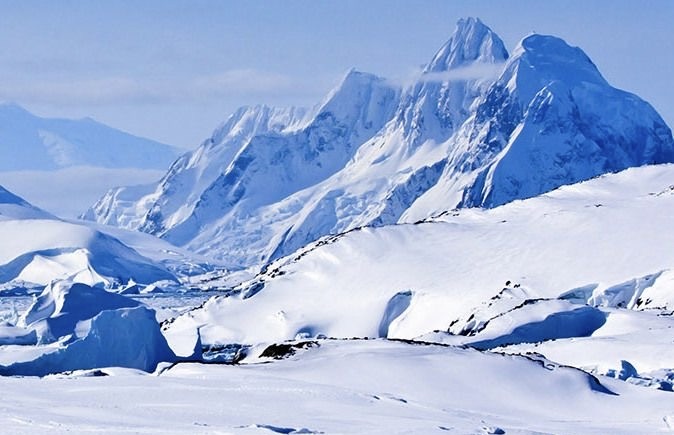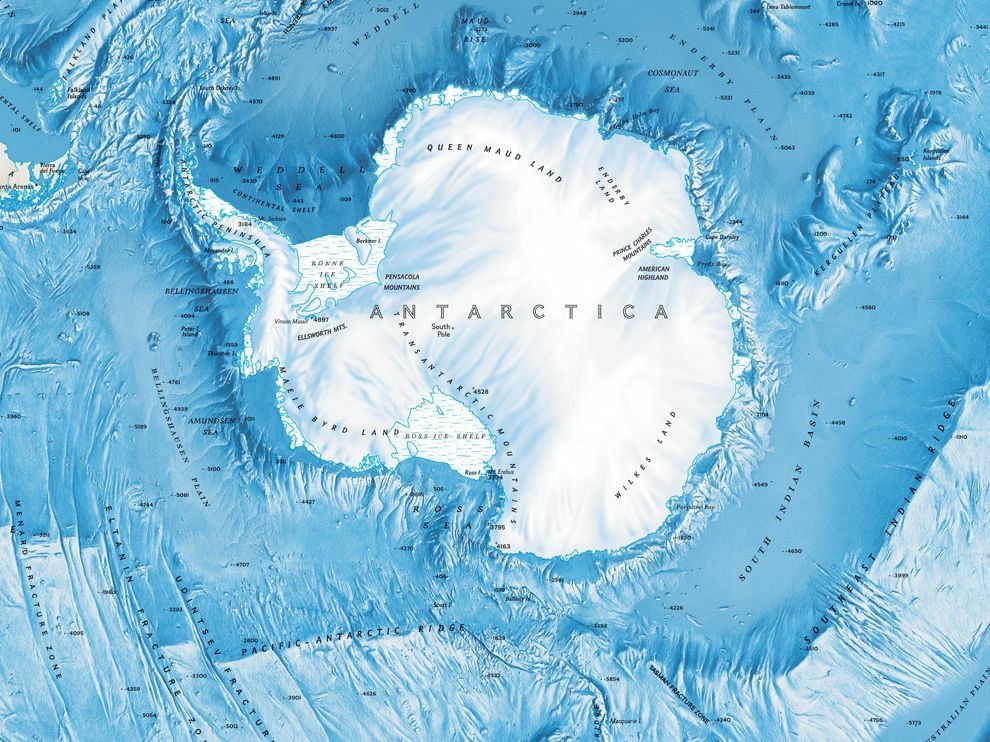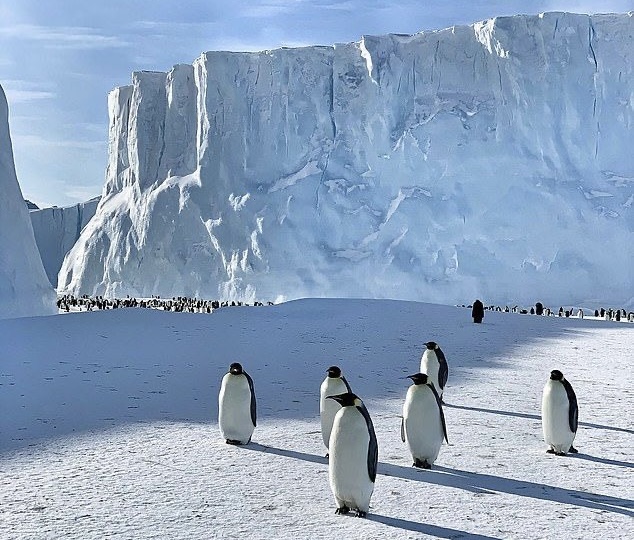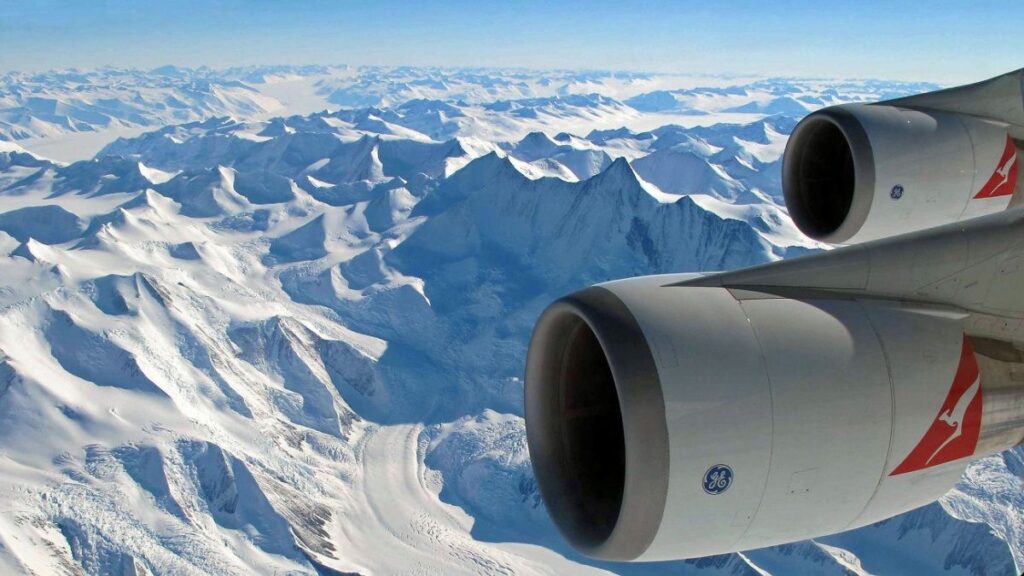Let’s start with a tweet, just ten words:
“Why can’t you fly over Antarctica? There’s nothing there, right?”
222,000 likes later, the internet did what it does best: explode into chaos.
A lot of people gave several interesting reasons; one said it was where the government hides the truth about lizard people.
Settle down, Stranger Things fans!
The real reason is just as wild. Let’s start with this story that actually happened.
Once upon a time, not in a fairytale, but in 1979, a plane full of tourists left New Zealand and set off on an unforgettable flight across the most mysterious place on Earth: Antarctica.
The goal of the 257 passengers on board was a peaceful trip to fly over Antarctica and back. No layovers. No baggage claim. Just eleven hours of snowy views from the sky, warm drinks, and bragging rights for life. What could possibly go wrong?
A lot, it turns out.
Due to a small change in the flight path and bad weather, the pilots didn’t realize they were flying straight toward a giant volcano that was covered in snow: Mount Erebus. The sky and the snow had blended, so the pilot could not tell how close they were to the ground until it was too late.
Antarctica has been the star of almost every conspiracy theorist’s fever dream. A Nazi base hidden beneath the ice. An alien ship crashed and was buried deep below the South Pole.
The plane crashed into the mountain and all 257 people on board were killed. It was a sad and shocking moment in aviation history, and it made airlines have second thoughts about flying anywhere near the icy continent.
Ever since then, Antarctica has been the star of almost every conspiracy theorist’s fever dream. A Nazi base hidden beneath the ice. An alien ship crashed and was buried deep below the South Pole. An icy doorway to another dimension. A secret international agreement to keep the truth from the public.
But ask a pilot, or a scientist, and they will tell you something much less dramatic…but still captivating.
The truth about why commercial planes avoid flying over Antarctica has more to do with the bone-chilling cold, lack of safe space to land, and a continent that couldn’t care less if you survive the trip or not.
Still curious?
Good! While there may not be an ancient pyramid under the ice, the real story of why you still cannot fly over Antarctica is weirder, wilder, and much more real than anything conspiracy theorists might have said.
The First Time Humans Flew Over Antarctica
This brings us to the golden age of exploration.
Antarctica was never just going to sit there untouched and unbothered. In the golden era of exploration, the frozen continent practically dared humans to come poke it.
Richard E. Byrd was the first man to accept the challenge. He was the first person who thought flying over a giant frozen wasteland that no one else had been to was a good idea. Don’t worry, he survived, which is why we are talking about him.
On November 29, 1929, Byrd flew a Ford Trimotor called the “Floyd Bennett” over the South Pole, becoming the first person to do so. It was cold. It was dangerous. It was also kind of pointless, because he could not really see much through all the snow and clouds.
No military basis, no nuclear testing, and definitely no unapproved international tourism flights without a massive stack of paperwork.
However, his stunt kicked off a trend. Suddenly, everyone wanted to do what he did. Throughout the 1930s and ‘40s, the U.S., Britain, Norway, and others sent expeditions. Some were scientific, some military, some just flexing.
By the 1950s, governments were spending serious money exploring Antarctica. Planes were equipped with skis because there were no real runways. These planes will fly between icy camps, battling strong winds that could punch harder than a boxer during a snowstorm.
Is Antarctica a No-Fly Zone?
No, it’s not. You can fly over Antarctica. It’s not illegal, we promise.

There is no giant “NO ENTRY” sign in the sky. No secret government laser that zaps planes that get too close. You can fly over the continent, but you probably won’t, and here is why.
First of all, there is the Antarctic Treaty of 1959. This treaty was signed by 12 countries (now with 56 signatories). The treaty says that the continent is for science, not war. No military basis, no nuclear testing, and definitely no unapproved international tourism flights without a massive stack of paperwork.
Then there is the issue of infrastructure, or the lack of it. Let’s say your plane runs into trouble. In most places on Earth, you could land at the nearest airport, right?
But over Antarctica? Good luck.
There are no proper airports, no control towers, no flight paths, no Starbucks lounge, no emergency landing strip; just endless ice and wind.
Although there are a few tiny runways, they are usually built on frozen ice, only open in summer, and usually meant for small planes that are bringing supplies to research camps, not big airliners. This means if something goes wrong mid-flight, you are basically stuck in the sky over a frozen desert with nowhere to land. Your nearest emergency landing site might be thousands of miles away.
So, unless your plane has four engines, a full survival kit, a pilot with polar training, and maybe a penguin co-pilot who laughs in the face of frostbite, forget about flying over Antarctica.
The Weather Is Out to Get You
Let’s talk about the real boss of Antarctica: the weather.
The continent is home to katabatic winds, which are gravity-driven gusts that rush down glacier slopes at over 100 mph. They can flip tents, crash airplanes, and generally ruin your day.
“Temperatures there can drop to -80°C, which is cold enough to make jet fuel turn to slush.”
It is also cold enough to make electronics cry for help. The skies are often full of clouds, snow, fog, or even all three at once, which can make visibility very poor. Temperatures there can drop to -80°C, which is cold enough to make jet fuel turn to slush.
The terrain can be deceptive. It can look flat until suddenly— it’s not.
Many mountains in Antarctica are fully covered in snow, which makes them invisible until it is too late. Flying here is like driving blindfolded through a snowstorm and at the same time being pelted with ice cubes by an angry sky god.
Compasses Gets Confused
The closer you get to the South Pole, the weirder things get with navigation.

Remember compasses? Those little arrow things that usually point north?
Near the poles, they lose their minds.
Antarctica sits near the magnetic South Pole, where magnetic lines are vertical rather than horizontal. This means your compass might not just be wrong, it might be totally useless.
Sure, technology has provided us with GPS now, but pilots still rely on backup systems. The high latitudes can affect the satellite signals, too. In fact, some planes have special polar-rated systems so they will be able to deal with navigation issues when they start getting close to the South Pole.
So if it will make your GPS glitch out and your compass spin like a toy, then we don’t think it is a good idea to be cruising over 14 million square kilometers of frozen wilderness.
Airline Rules Are Against It
There is something called ETOPS. It is a rule that says two-engine planes must always be within a certain distance of a backup runway, just in case something goes wrong.
Since there are no emergency runways for big planes in Antarctica, most commercial jets cannot legally fly over it. Only four-engine jets or government/military planes with special training can get close. Even if you could legally fly over it, you would still need the following:
- A backup oxygen system
- Survival gear for freezing temperatures
- A crew trained for emergency landings on ice
- A lot of extra fuel
- And a serious risk budget
So yes! No wonder most airlines go around the continent.
Climate change is altering the landscape, and if we are being honest, the changes are occurring in ways that are not great.
Unlike the conspiracy theories, the real reason why you can’t fly over Antarctica might be boring to some people, but it is real. Flying over Antarctica is dangerous, expensive, and there is no reason to do it unless you have to.
Could Things Change?
Antarctica is the coldest, windiest, and driest place on Earth. But could things change? Maybe. We are in a technological era, where new things are constantly being invented, so never say never.

Blue-ice runways are allowing certain types of aircraft to land safely on the continent in summer months, and advanced GPS systems are improving polar navigation.
Even climate change is altering the landscape, and if we are being honest, the changes are occurring in ways that are not great. Still, it is making some areas more accessible while posing new challenges. But don’t expect your next Emirates flight to take a shortcut over the South Pole just to save 30 minutes.
Finally…The Cold Truth
There is something romantic and mysterious about Antarctica. It is the only place on earth where nature still writes the rules. No skyscrapers, no highways, no golden arches or glowing Wi-Fi signals. Just ice, wind, rock, and silence. Untouched nature in its beautiful glory. Maybe that’s why we are also obsessed with it.
So, the next time someone asks, “Why can’t you fly over Antarctica?” You can lean in, smile, and say:
“You can, but you probably shouldn’t. Unless you really like danger, cold, and disappointment.”
Now go tweet that!


